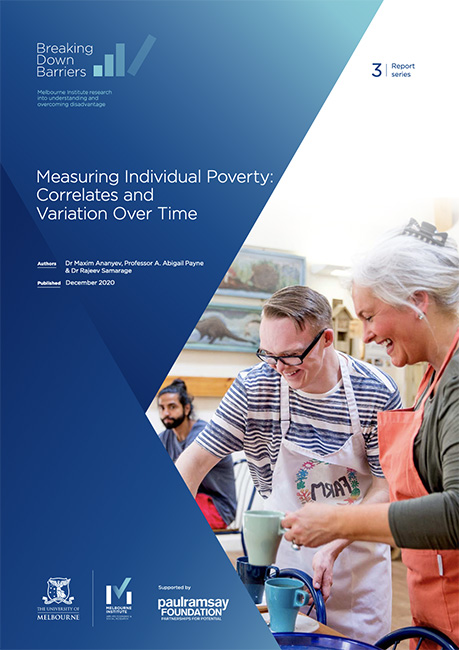Measuring Individual Poverty: Correlates and Variation Over Time
This report captures family income and sociodemographic measures for individuals, which sheds light on the poverty faced by Australians at a household level.

This report uses data that captures a 5% sample of individuals residing in Australia over three Census years: 2006, 2011 and 2016. We use family income and sociodemographic measures for these individuals, which allows us to shed light on the poverty faced by Australians at a household level and how this poverty varies over time.
When looking at the cross-sectional snapshots, we find striking correlations across a few key socio-demographic measures and poverty. Moreover, these correlations are persistent. Across all years, the highest poverty rate is recorded for single parents and for those who did not finish high school. Indigenous people are approximately twice as likely to be in poverty than non-Indigenous Australian-born persons and foreign-born individuals are significantly more likely to be in poverty than non-Indigenous Australian-born individuals.
We also found that changes in family, education or employment status is associated with moving into or out of poverty. People change their family type over time, as well as their level of education and employment status. We find that those who exit poverty are more likely to experience a positive change in employment status and/or educational degree than those who remain in poverty. Specifically, among those who moved out of poverty between 2006 and 2011, 24% had a better employment outcome.
Read the full report Request a briefing
AUTHORS
Dr Maxim Ananyev
Professor A. Abigail Payne
Dr Rajeev Samarage